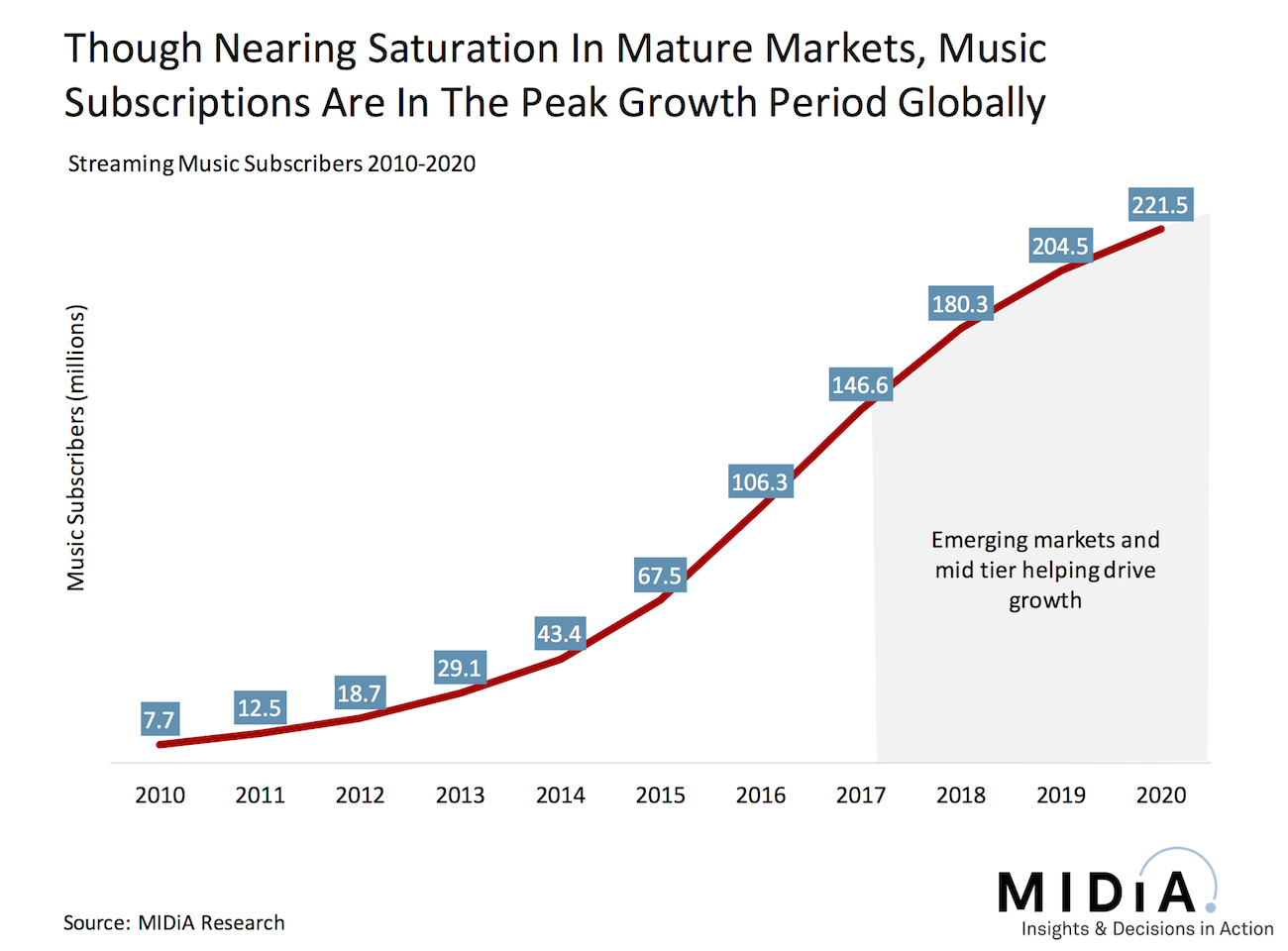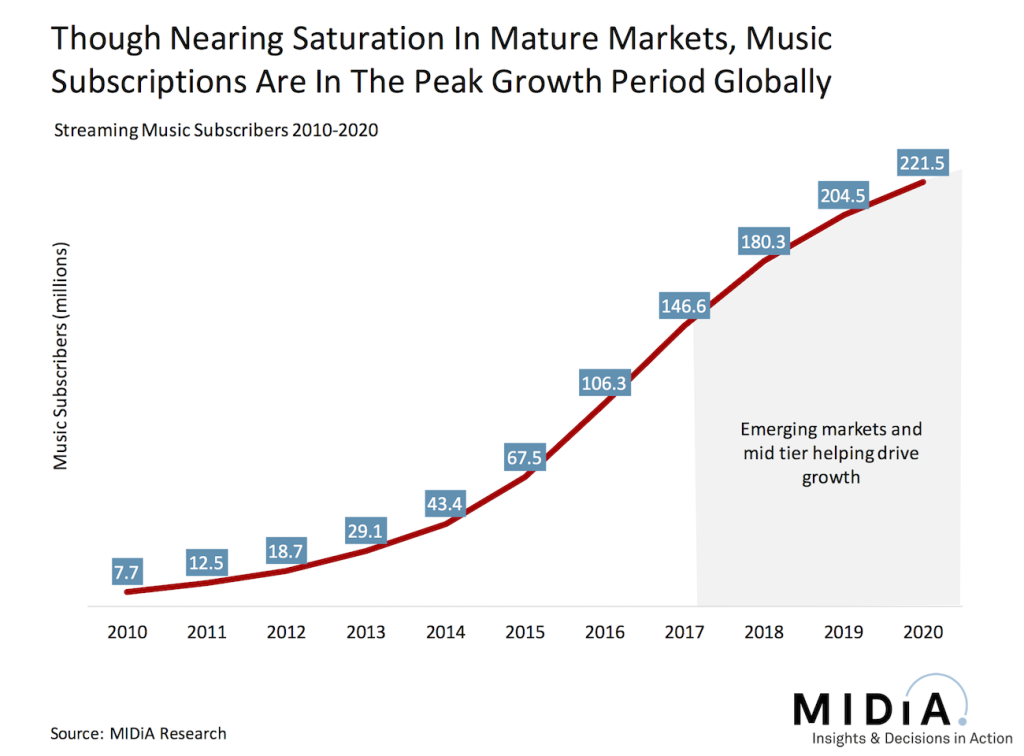Streaming Music Pricing: Inelastic Stretching


Pricing has long been an issue for streaming music subscriptions, with the $/€/£ 9.99 price point above what most people spend on music each month. Streaming services have navigated around the issue with a combination of tactics such as telco bundles and aggressive price discounts (e.g. $1 for 3 months). However, these tactics place long term pressure on the 9.99 price point as they create a consumer perception that streaming music should be cheaper than it is. There is no doubt that discounts are doing a great job of converting users and of easing otherwise reluctant consumers into the 9.99 pricing, but the next phase of the streaming market requires a more sustainable approach to pricing strategy, coupled with some serious product innovation.
To explore this issue in detail, MIDiA has published its latest music report: Streaming Music Pricing: Inelastic Stretching. In it we use proprietary MIDiA data to assess how much of the 9.99 opportunity has been tapped, how much further opportunity exists and what level of demand exists for different price points.
These are some of the key takeaways from the report:
- 2017 will be a stellar streaming year: A combination of enough growth being left in the market and the continued success of pricing discounts should see subscriber numbers grow at a slightly faster rate in 2017 than they did in 2016, hitting 146.6 million. This is up 44.3 million from the 106.3 million hit in 2016. (That 2016 figure is 5.9 million more than our provisional estimate published back in the start of January, as the result of receiving a couple of slightly stronger than expected numbers. However, the increase is not due to the very high subscriber numbers reported elsewhere for some Chinese services. We consider these numbers to be high and we place our estimate closer to half of those.) By 2018, subscriber growth will begin to lessen and by 2019 we’ll be in market maturation phase. Around 2/3 of the readily addressable opportunity for 9.99 has already been tapped and this remainder is what will drive the 2017 growth. New tactics will be required for the rest of the cycle.
- Beyond 9.99: Emerging markets, new partnerships and discounts will all be important growth tactics, but pricing will also be key. Many readers will be familiar with my longstanding enthusiasm for mid tier streaming pricing. Unfortunately, mid-tier pricing by stealth (e.g. price discounts, student offers) coupled with an overly resplendent free marketplace (YouTube, Vevo, Spotify free, etc.) have combined to suck most of the oxygen out of the mid tier sector. Nonetheless, there is a major need for something to cater for the lower end of the market. One of the key sections in the report reveals that streaming pricing is inelastic and the change in demand is smaller than the change in pricing. Even dropping the main price to $6.99 would only result in reducing the size of the streaming market.
- Unbundling: So how do we square the circle? By using super low prices (e.g. 2.99; 3.99) to launch laser focused niche apps aimed at specific demographics and genres. This can be done both by standalone specialists (e.g. the Overflow, FreqsTV) and by the big incumbents taking a leaf out of Facebook’s app strategy and creating standalone, unbundled apps. In order for them to work, they cannot simply look like a thin slice of Spotify or Apple Music. They have to be as different from their parent apps as Instagram and Whatsapp are from Facebook. That means new user experiences, new functionality, different approaches to programming/ curation and standalone branding. To work, mid tier products have to look like something unique, not a compromised, watered down version of the full fat product. Mid tier services risk looking like low-fat, gluten-free, sugar-free, organic, diet, hand knitted soya milk. While there is a market for it, it shouldn’t come as a surprise that the market is in fact tiny.
So, a good 2017 looks on the cards for streaming, one which will confirm the maturity of the streaming sector as a whole. But the next stage of the market will require product and pricing innovation, at both the high end and the low end. Now is the time to start putting the pieces in place for 2018 and beyond.
The report from which this insight is taken (Streaming Music Pricing: Inelastic Stretching) is immediately available to MIDiA report subscribers. To find out how to become a MIDiA subscriber email info@midiaresearch.com. If you just want to buy the report and the supporting data then visit our report store here.


There are comments on this post join the discussion.